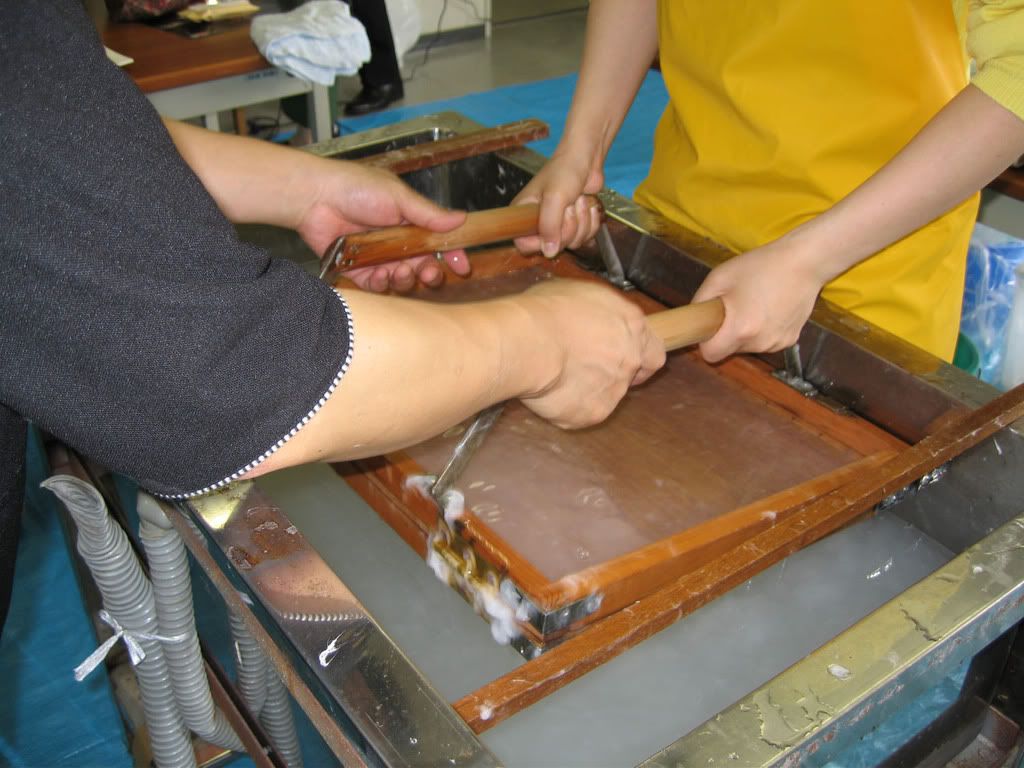
The word “paper” is derived from the word papyrus. Papyrus is a plant on which the Egyptian used to as a “paper”. To be specific they used the leaf as a paper.
Before the advent of paper, people tend to write on walls, and because you cannot carry a wall with you to deliver a message it was then improved in the form of tablets / stone. Then generation past and people need to lessen the burden of carrying a tablet so they tried to used different materials to make paper. So, the story goes on until they discovered different plats to make paper and in the end process they settled o using pulp of different plant to make paper.
In the last thousand of years of man’s existence it is difficult to imagine our lives without paper. So, to appreciate more the importance of paper, why not make one.
Here is an article about Paper making:
RECYCLE RICE STRAW INTO HANDMADE PAPER
Materials needed:
— rice straw
— sodium hydroxide
— sodium hypochloride
— rosin size
— alum
— cheese cloth
Tools/Equipments:
— mould
— sieve or fine screen, strains the pulp
— deckle — wooden frame, confines the pulp during sheet forming
— drum — should be alkali or acid-resistant
— double-decked screen box:
upper deck: 20 mesh screen bottom box
Lower deck: 100 mesh screen bottom box
— wooden mallet
— press
Preparation of raw materials
— Separate rice stalk from the leaves and panicles. Out these into 5-7 cm. pieces and
then wash with water.Pulping
— Boil stalks in 2.0% sodium hydroxide solution using liquor to material ratio of 10:1 for
2-3 hours or until stalks become soft.
— Immediately after boiling, drain the stalks and transfer these into the screened bottom box.
— Wash stalks thoroughly with water.
— Pound stalks with a wooden mallet.
— The screen the pulp on double-decked screen-bottom box by running pulp under high
water pressure.
Bleaching
— Bleach the pulp either by single- or multi-stage bleaching process.
The bleachingconditions are as follows:
— Bleach solution (sodium hypochlorite) 2%
— Consistency 10%
— Duration 15 min.
— Temperature 35-45° C
— Thoroughly wash the pulp with water after each stage.
Papermaking
— Prior to sheet forming, allow the pulp to swell in water at 2% consistency for 30 minutes.
— Drain the pulp and form this into balls.
— Beat the pulp with a wooden mallet until it is free of lumps when suspended in water.
— Transfer the beaten pulp into the paper vat.
— Add water to the desired consistency of the slurry.
If you desire thin paper, add more water; if thick paper, put less water.
— Add paper additives: rosin size (1%) and alum (2%)
— Dip the mould fitted in the deckle into the paper vat at an angle, straighten out and lift
it to catch an amount of the solution on top of the screen.
— Tilt the mould and deckle back and forth to the maker side and throw excess slurry
back to the paper vat.
— Shake the mould and deckle.
— Tilt the mould again back and forth until most of the water comes out through the screen.
— Then separate the mould from the deckle and lay it on the pieces of blotting material
like cheesecloth.
— Cover this with another piece of blotting material.
— Pressed with a roller, slowly separate the screen from the street.
— Lay the sheet on a plan galvanized iron, cover it with blotters and press it four times
with a roller.
— Remove the blotters and hang the sheet to dry.
The handmade paper produced is creamy white, 0.43 mm. thick. It is suitable for
special paper products like greeting cards, calling cards, and other novelty paper items.
Source: Technology, Vol. IX, No. 4, 1987
Tekno tulong. picture from:unc.edu